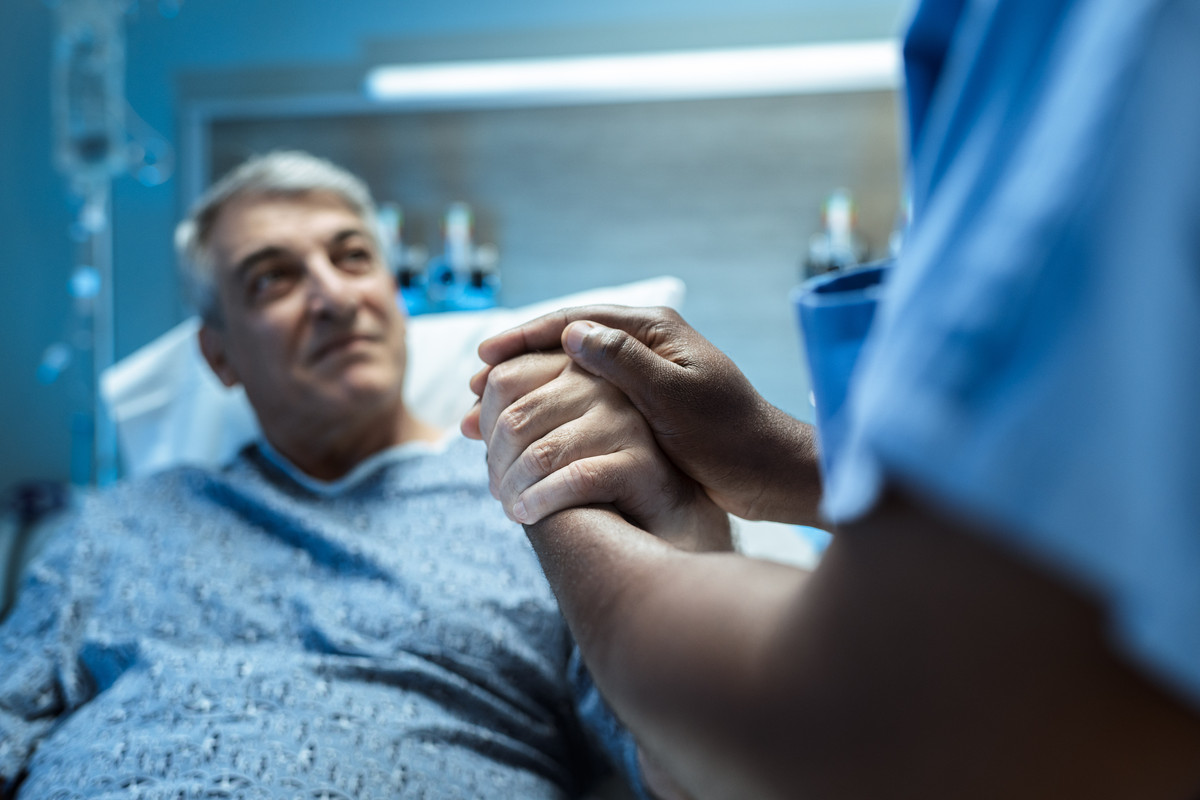Testicular Cancer Surgery
Testicular cancer develops in the testes, two male reproductive glands in the scrotum that produce sperm and testosterone. Most testicular tumors begin with abnormal changes in sperm-producing germ cells. While the exact cause is unknown, several risk factors have been identified, including an undescended testicle and a family history of testicular cancer. Additionally, because most cases are diagnosed in young men between ages 15 and 35, age is also believed to be a factor. Symptoms can include a painless lump or swelling in one testicle, a sensation of heaviness in the scrotum and a dull ache in the lower abdomen or groin.
-
Ages 15 and 35
most cases of testicular cancer are diagnosed
-
Approx. 1%
of cancers in men, testicular cancer is relatively rare
Testicular cancer is relatively rare and highly treatable, especially when detected early. Surgery is the main treatment approach. Testicular cancer surgery is relatively straightforward and continues to improve through ongoing advances, such as:
- Laparoscopic and robot-assisted techniques, which can reduce surgical complications and recovery time
- Nerve-sparing techniques, which can minimize any loss of sensation
- Postoperative implantation of an artificial testicle, which can improve the aesthetic outcome
Surgical treatment options for testicular cancer can include radical inguinal orchiectomy and retroperitoneal lymph node dissection. Both procedures may be performed individually or as part of a broader treatment plan that includes chemotherapy and/or radiation therapy.
Radical inguinal orchiectomy
Often the first and primary treatment for testicular cancer, radical inguinal orchiectomy is a surgical procedure that involves removing the cancerous testicle and the attached spermatic cord through an incision in the groin. This approach is used for both diagnostic confirmation and as a curative measure. The removed tissue will be sent to a laboratory for microscopic examination by a pathologist, who can determine the precise type and stage of the tumor. This information can be used to guide additional treatment if needed.
How to prepare for radical inguinal orchiectomy for testicular cancer
To prepare for a radical inguinal orchiectomy, the patient should follow their surgeon’s specific instructions, which may include fasting before surgery and arranging for transportation home afterward due to the lingering effects of anesthesia. If future fertility is a concern, the patient may also want to explore fertility preservation options, such as sperm banking, before the procedure.
What to expect after radical inguinal orchiectomy for testicular cancer
After a radical inguinal orchiectomy, the patient can expect some pain and swelling in the groin area, which can usually be managed with prescribed pain medications. Recovery typically involves follow-up appointments to monitor healing and discuss further treatment if needed based on the pathology results of the removed testicle.
What are the risks and potential complications of radical inguinal orchiectomy for testicular cancer?
Risks of radical inguinal orchiectomy include infection, excessive bleeding and complications related to anesthesia, as well as the potential for long-term issues, such as changes in hormone levels, infertility and psychological effects related to the loss of a testicle. Additionally, some patients may experience nerve damage or chronic pain in the treated area.


Rated High Performing in Urology
Schedule an AppointmentRetroperitoneal lymph node dissection
Retroperitoneal lymph node dissection may be considered to treat a nonseminomatous germ cell tumor with evidence of lymph node involvement or to ensure complete removal of cancerous cells after radical inguinal orchiectomy. This complex surgical procedure, which may be performed with traditional or minimally invasive techniques, involves removing lymph nodes from the retroperitoneal space behind the abdominal cavity.
How to prepare for retroperitoneal lymph node dissection for testicular cancer
To prepare for retroperitoneal lymph node dissection, the patient should discuss their medical history and medication use with their surgeon, who may advise temporarily stopping blood thinners or other specific medications before surgery. Additionally, the patient should arrange for transportation home post-surgery because the effects of the anesthesia may impair their ability to drive.
What to expect after retroperitoneal lymph node dissection for testicular cancer
After retroperitoneal lymph node dissection, the patient can expect some discomfort in the abdominal area, which can usually be managed with prescribed pain relievers. Recovery may involve a hospital stay for monitoring and follow-up appointments to discuss the pathology results and further treatment options if cancer is detected in the removed lymph nodes.
What are the risks and potential complications of retroperitoneal lymph node dissection for testicular cancer?
Risks of retroperitoneal lymph node dissection include infection, bleeding and complications related to anesthesia, as well as the potential for damage to surrounding organs, such as the intestines and kidneys. Depending on the extent of the surgery, some patients also experience long-term effects, such as swelling due to lymph accumulation (lymphedema) and changes in sexual function.
Benefit from world-class care at Moffitt Cancer Center
The surgeons in Moffitt’s high-volume Urologic Oncology Program have extensive experience in performing all types of testicular cancer surgery, including radical inguinal orchiectomy and retroperitoneal lymph node dissection. If you would like to learn more, you can request an appointment with a specialist at Moffitt by calling 1-888-663-3488 or submitting a new patient registration form online. We do not require referrals.
Treatment
